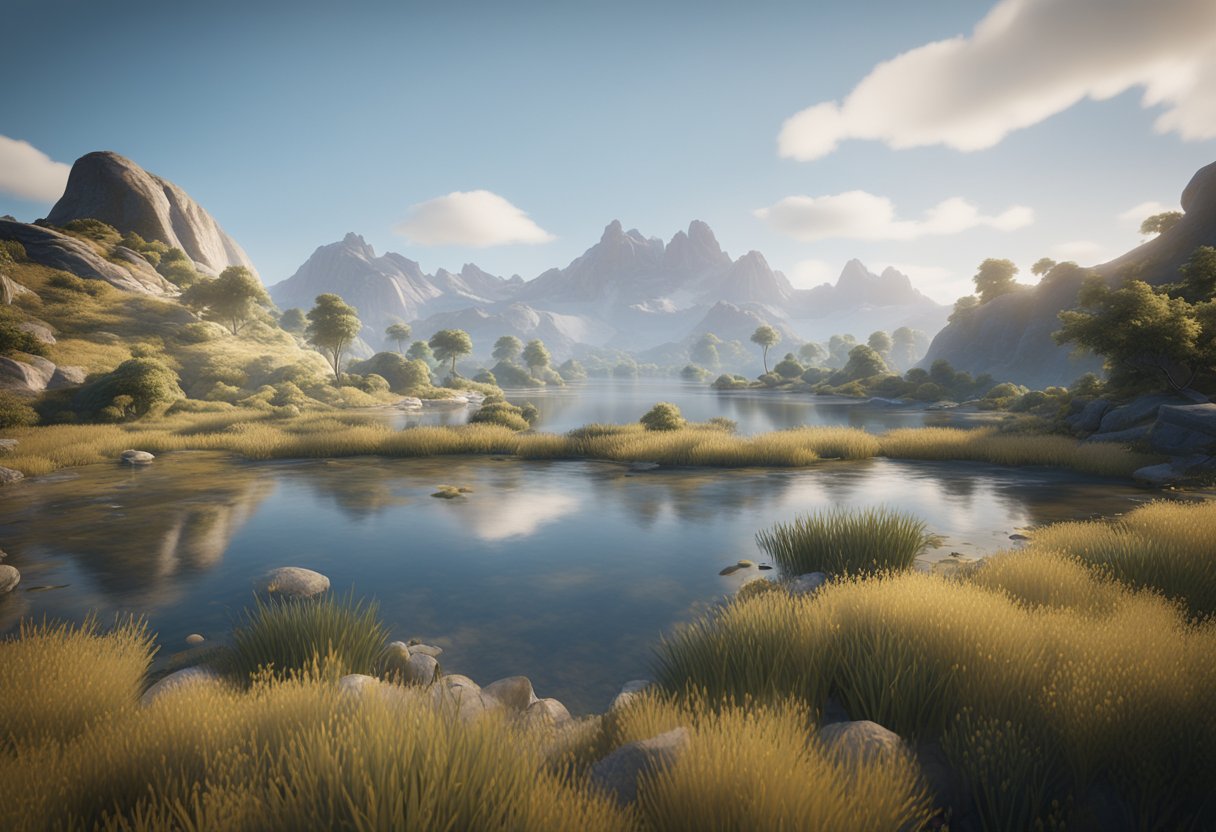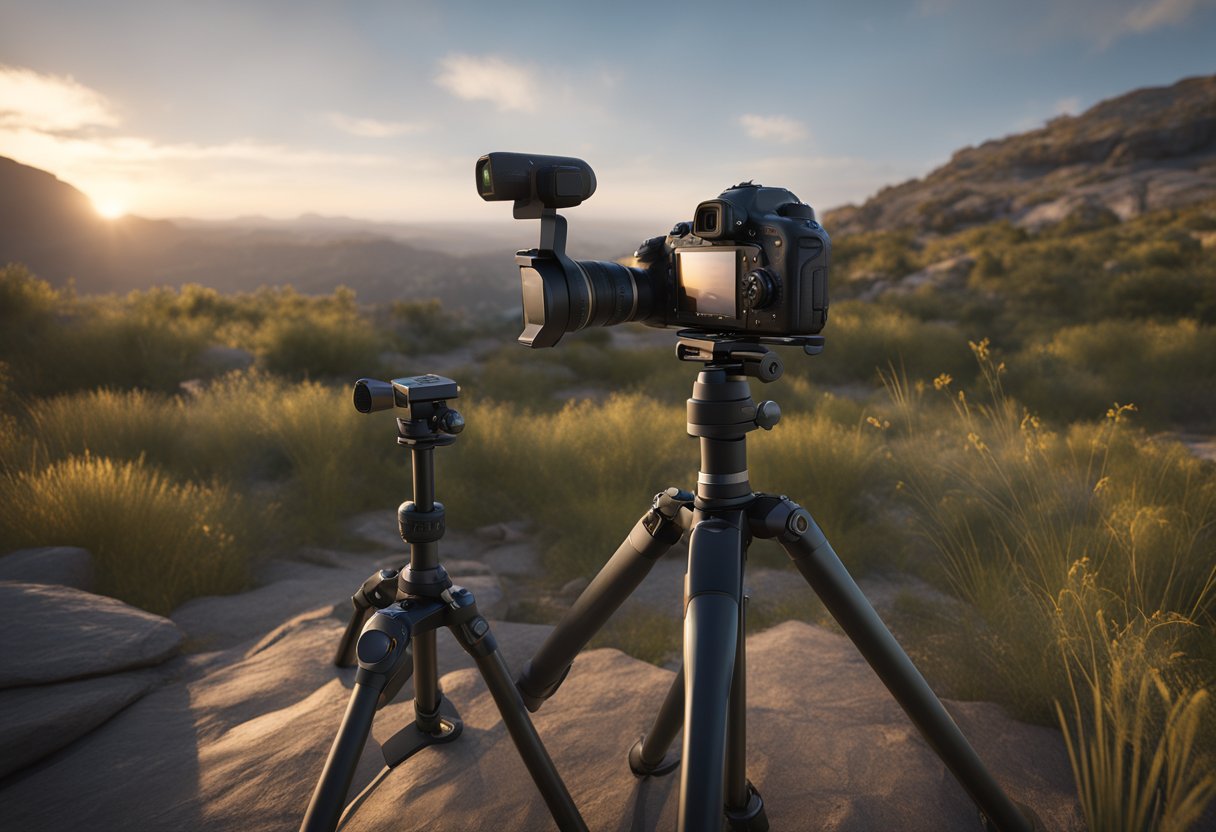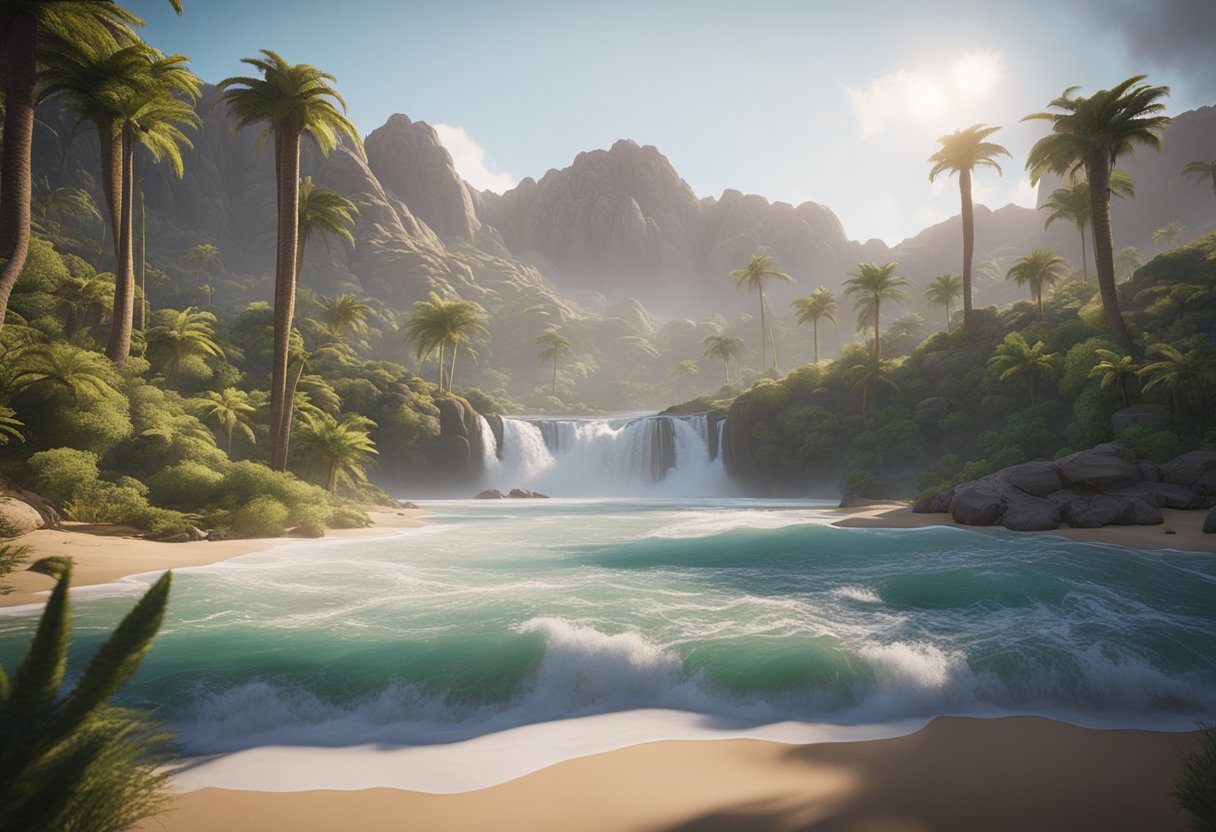
As the day comes to a close, the sky transforms into a beautiful canvas of warm colors, making it the perfect time to capture stunning sunset landscapes. However, getting the perfect shot can be challenging, especially when it comes to finding the right camera settings. With so many variables to consider, it’s easy to feel overwhelmed and unsure of where to start.
To capture vibrant sunset landscapes, it’s important to understand the role of camera settings in achieving the desired effect. The right combination of aperture, shutter speed, and ISO can make all the difference in creating a stunning image. In this article, we will explore the best camera settings for capturing vibrant sunset landscapes, providing tips and tricks to help you take your photography to the next level.
Understanding Light and Time
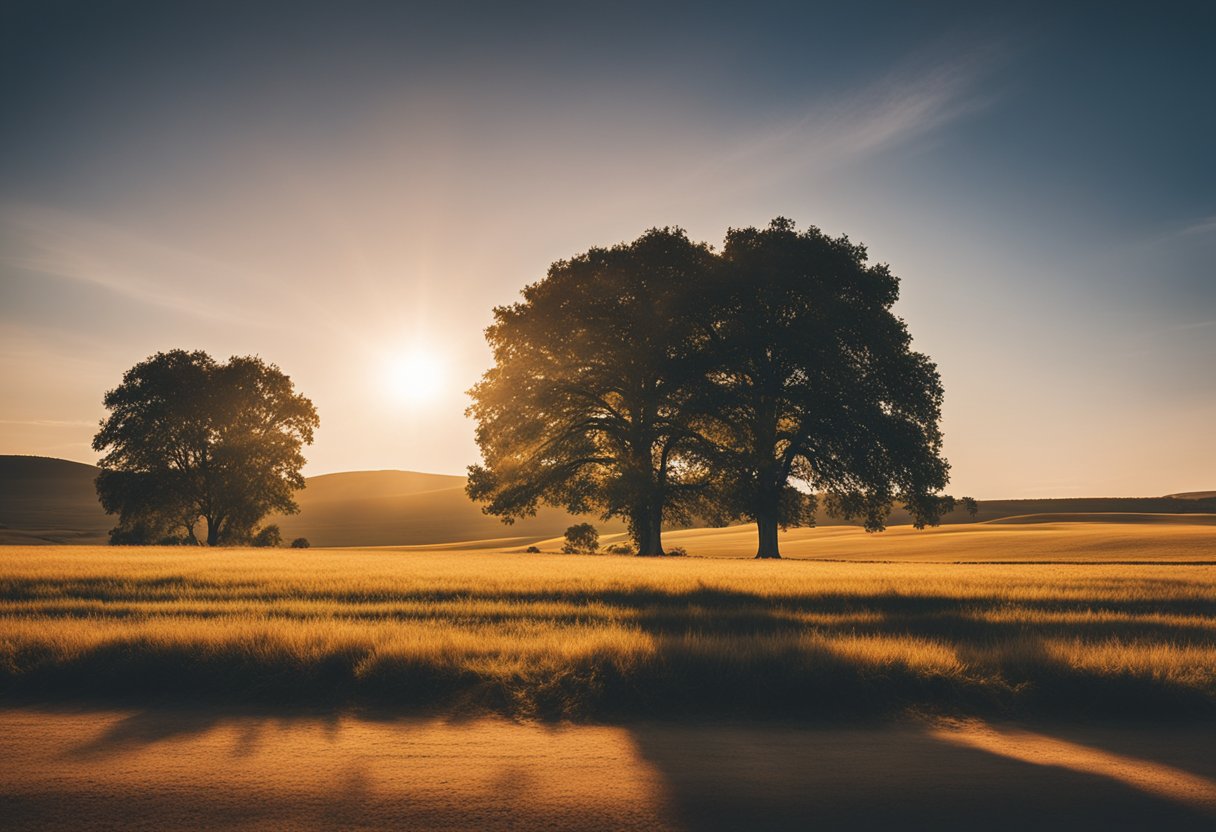
Golden Hour Fundamentals
To capture vibrant sunset landscapes, it’s important to understand the concept of the “golden hour.” This is the period of time just after sunrise or just before sunset when the sun is low on the horizon and the light is soft and warm. During this time, the light is less harsh and creates longer shadows, which can add depth and dimension to your photos.
It’s important to note that the exact timing of the golden hour will vary depending on your location and the time of year. You can use a variety of apps and websites to determine the timing of the golden hour in your area.
Monitoring Weather Conditions
In addition to understanding the timing of the golden hour, it’s also important to monitor weather conditions. Clouds can add drama and interest to your sunset landscapes, but too many clouds can obscure the sun and prevent you from capturing the vibrant colors of the sunset.
Before heading out to capture sunset landscapes, it’s important to check the weather forecast and look for conditions that will enhance your photos. A clear sky with a few scattered clouds is often ideal, but don’t be afraid to experiment with different weather conditions to create unique and interesting photos.
Overall, understanding the interplay between light and time is essential for capturing vibrant sunset landscapes. By knowing when to shoot and what weather conditions to look for, you can create stunning photos that capture the beauty of the natural world.
Camera Gear and Settings
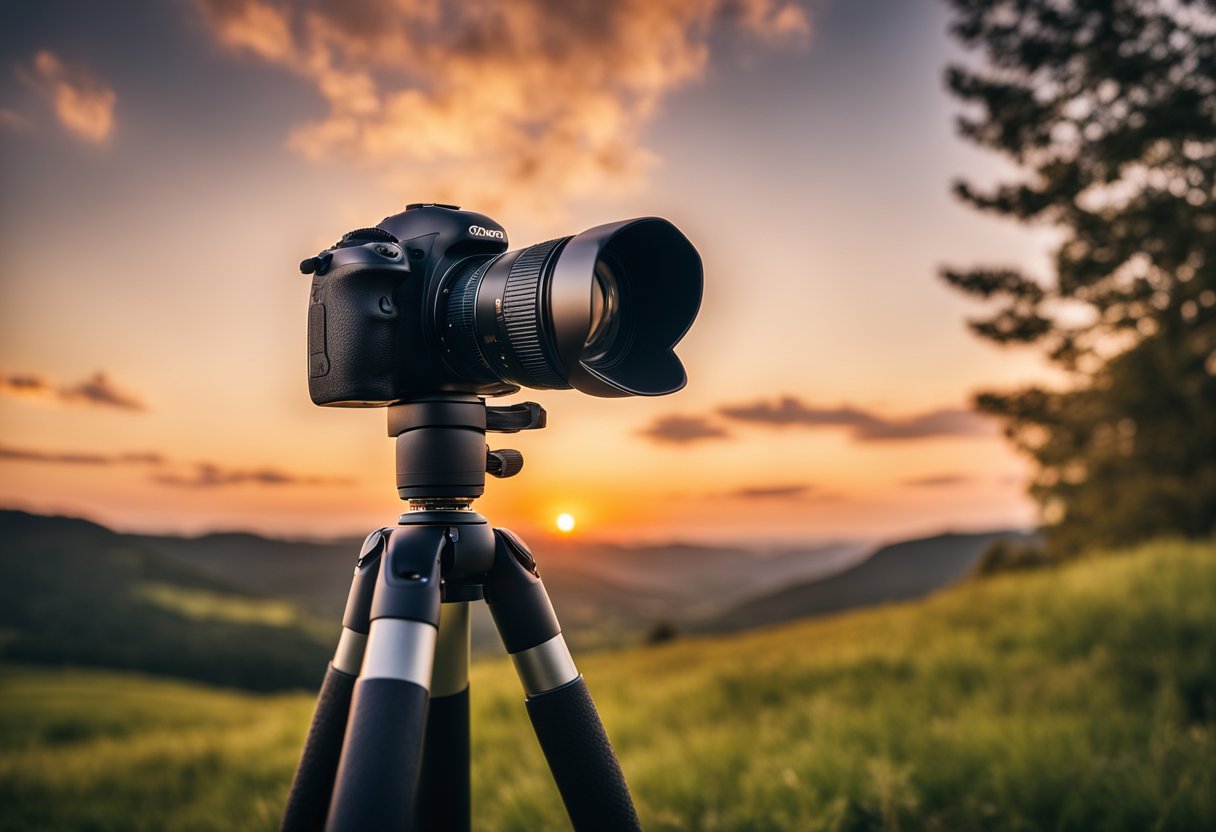
Choosing the Right Equipment
To capture vibrant sunset landscapes, having the right equipment is crucial. A camera with manual controls and a wide-angle lens are recommended. A tripod can also be helpful in keeping the camera steady and avoiding camera shake.
Manual Mode Mastery
Using manual mode gives the photographer full control over the camera settings, allowing them to capture the perfect shot. It is recommended to set the white balance to “Daylight” or “Cloudy” to avoid color casts.
Optimal Aperture, Shutter Speed, and ISO
The aperture, shutter speed, and ISO are the three main settings that need to be adjusted to capture vibrant sunset landscapes. It is recommended to use a small aperture (around f/11) to ensure the entire scene is in focus. The shutter speed should be adjusted to capture the movement of the clouds and waves, typically between 1/30th and 1/4th of a second. The ISO should be kept low (around 100-200) to avoid noise in the image.
By following these camera gear and settings recommendations, photographers can capture stunning and vibrant sunset landscapes.
Composition Techniques
When it comes to capturing vibrant sunset landscapes, composition techniques play a vital role in creating visually appealing shots. Here are two techniques that can help you achieve stunning sunset landscape shots.
Foreground Interest
Including foreground interest in your sunset landscape shots can add depth and create a more engaging photo. This can be achieved by incorporating objects such as rocks, trees, or flowers in the foreground of your shot. By doing so, you create a sense of scale and depth in the photo, which can help draw the viewer’s eye towards the sunset.
Rule of Thirds Application
The rule of thirds is a classic composition technique that can be applied to sunset landscape photography. The basic idea is to divide your shot into thirds, both horizontally and vertically, creating nine equal parts. The points where the lines intersect are known as the “power points,” and placing your subject at one of these points can create a more visually appealing shot.
When it comes to sunset landscapes, placing the horizon line on the lower third of the shot can create a more balanced composition. This allows more of the sky to be captured, creating a more dramatic effect and making the sunset the focal point of the photo.
By incorporating these composition techniques into your sunset landscape photography, you can capture stunning and vibrant shots that are sure to impress.
Post-Processing Tips
Enhancing Colors
After capturing a vibrant sunset landscape, enhancing the colors can make the image pop even more. One way to do this is by increasing the saturation of the colors. However, it’s important to not overdo it, as this can make the image look unrealistic. A good rule of thumb is to increase the saturation by no more than 10-15%.
Another way to enhance the colors is by adjusting the white balance. Sunset landscapes tend to have warm tones, so adjusting the white balance to a slightly warmer setting can make the colors appear more vibrant.
Balancing Exposure
When capturing a sunset landscape, it’s common for the sky to be much brighter than the foreground. This can result in an image where the foreground is underexposed. To balance the exposure, one option is to use a graduated neutral density filter when capturing the image.
If a filter wasn’t used, the exposure can be balanced in post-processing by adjusting the shadows and highlights. Increasing the shadows can bring out the details in the foreground, while decreasing the highlights can bring back some of the details in the sky. It’s important to not go too far with these adjustments, as it can result in an unnatural looking image.
By using these post-processing tips, you can enhance the colors and balance the exposure of your sunset landscapes to create stunning images.
Practical Field Advice
Scouting Locations
To capture vibrant sunset landscapes, it is essential to scout locations beforehand. Choose a location with a clear view of the horizon and interesting foreground elements that can add depth and interest to your images. Look for natural features such as trees, rocks, or water bodies that can be used to frame your shot.
Consider the direction of the sun and how it will affect the landscape. The sun should be behind you, illuminating the landscape in front of you. You can use apps such as The Photographer’s Ephemeris to determine the direction of the sun and the best time to shoot.
Timing Your Shoot
Timing is crucial for capturing vibrant sunset landscapes. Plan to arrive at your location at least an hour before sunset to allow for setup and scouting. This will also give you time to experiment with different compositions and camera settings.
Experiment with different shutter speeds to capture the movement of clouds or water. A slow shutter speed (1/30 sec or slower) can create a dreamy effect, while a fast shutter speed (1/500 sec or faster) can freeze the action.
By scouting locations and timing your shoot, you can capture stunning and vibrant sunset landscapes. Remember to experiment with different camera settings to create unique and compelling images.
Final Words
Capturing vibrant sunset landscapes requires a combination of the right camera settings and a bit of creativity. By using the tips and techniques outlined in this article, photographers can capture stunning sunset shots that are sure to impress.
Remember to experiment with different settings and compositions to find what works best for you. Don’t be afraid to try new things and take risks – sometimes the most unique and beautiful shots come from stepping outside of your comfort zone.
Additionally, it’s important to keep in mind that post-processing can also play a role in enhancing the vibrancy and color of your sunset shots. Using editing software such as Lightroom or Photoshop can allow you to fine-tune your images and bring out the colors and details that make a sunset truly breathtaking.
Overall, capturing vibrant sunset landscapes requires a combination of technical skill and artistic vision. With a bit of practice and experimentation, photographers can create stunning images that capture the beauty and majesty of the natural world.

